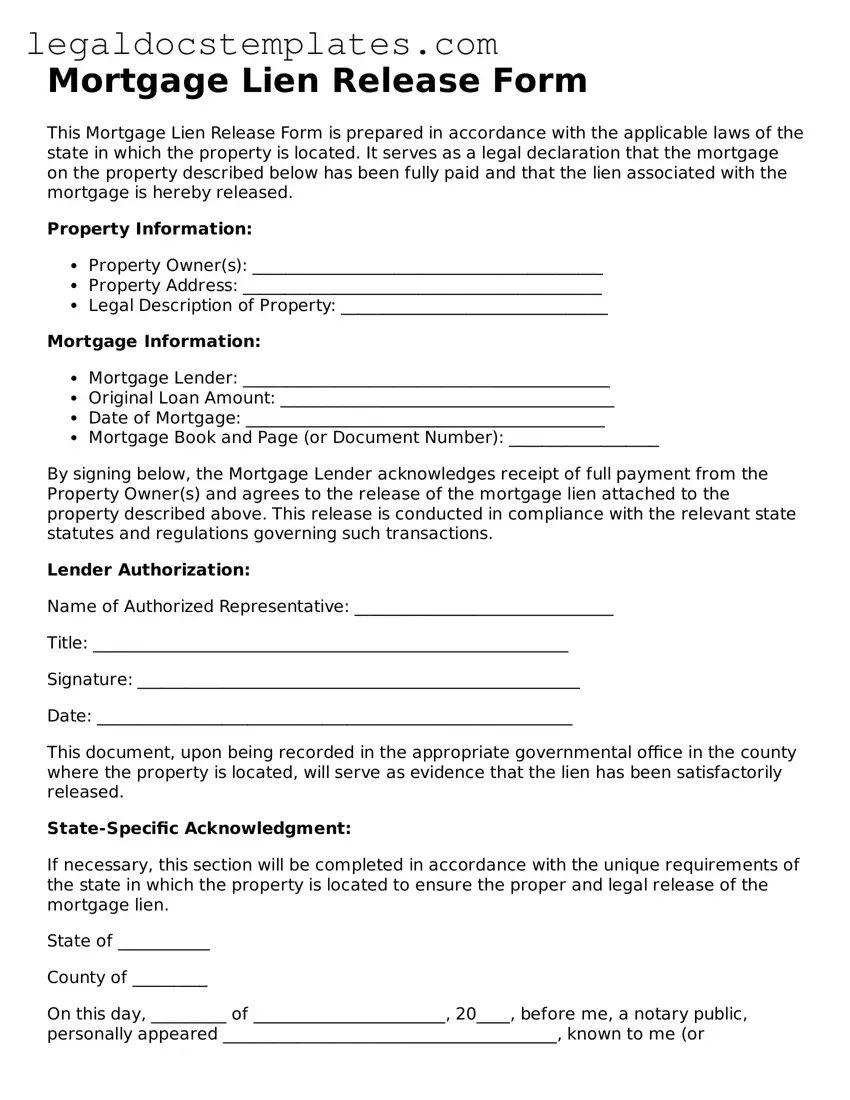Mortgage Lien Release Form
This Mortgage Lien Release Form is prepared in accordance with the applicable laws of the state in which the property is located. It serves as a legal declaration that the mortgage on the property described below has been fully paid and that the lien associated with the mortgage is hereby released.
Property Information:
- Property Owner(s): __________________________________________
- Property Address: ___________________________________________
- Legal Description of Property: ________________________________
Mortgage Information:
- Mortgage Lender: ____________________________________________
- Original Loan Amount: ________________________________________
- Date of Mortgage: ___________________________________________
- Mortgage Book and Page (or Document Number): __________________
By signing below, the Mortgage Lender acknowledges receipt of full payment from the Property Owner(s) and agrees to the release of the mortgage lien attached to the property described above. This release is conducted in compliance with the relevant state statutes and regulations governing such transactions.
Lender Authorization:
Name of Authorized Representative: _______________________________
Title: _________________________________________________________
Signature: _____________________________________________________
Date: _________________________________________________________
This document, upon being recorded in the appropriate governmental office in the county where the property is located, will serve as evidence that the lien has been satisfactorily released.
State-Specific Acknowledgment:
If necessary, this section will be completed in accordance with the unique requirements of the state in which the property is located to ensure the proper and legal release of the mortgage lien.
State of ___________
County of _________
On this day, _________ of _______________________, 20____, before me, a notary public, personally appeared ________________________________________, known to me (or satisfactorily proven) to be the person whose name is subscribed to the within instrument, and acknowledged that he/she executed the same for the purposes therein contained.
In witness whereof, I hereunto set my hand and official seal.
Notary Public: ____________________________
My Commission Expires: ___________________
